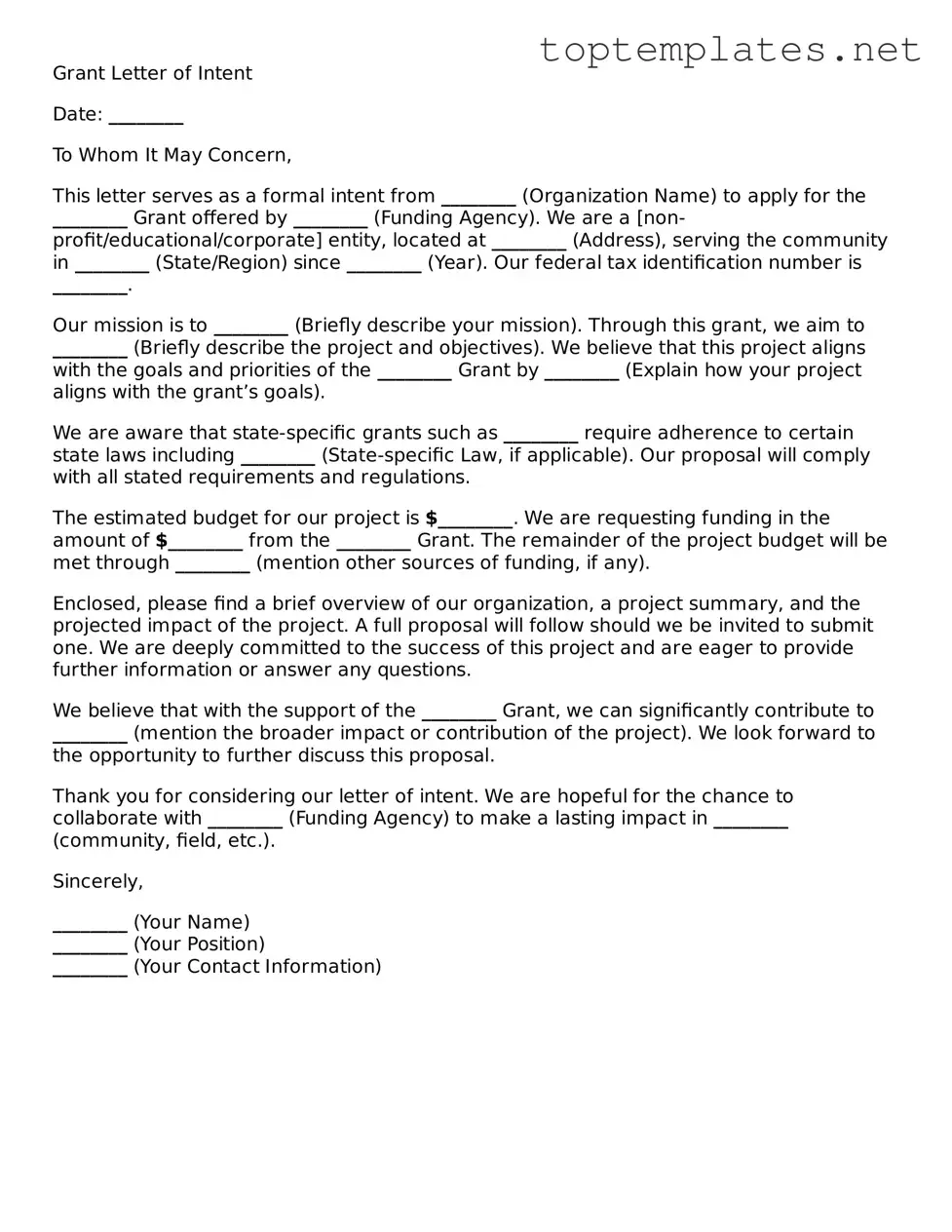Grant Letter of Intent
Date: ________
To Whom It May Concern,
This letter serves as a formal intent from ________ (Organization Name) to apply for the ________ Grant offered by ________ (Funding Agency). We are a [non-profit/educational/corporate] entity, located at ________ (Address), serving the community in ________ (State/Region) since ________ (Year). Our federal tax identification number is ________.
Our mission is to ________ (Briefly describe your mission). Through this grant, we aim to ________ (Briefly describe the project and objectives). We believe that this project aligns with the goals and priorities of the ________ Grant by ________ (Explain how your project aligns with the grant’s goals).
We are aware that state-specific grants such as ________ require adherence to certain state laws including ________ (State-specific Law, if applicable). Our proposal will comply with all stated requirements and regulations.
The estimated budget for our project is $________. We are requesting funding in the amount of $________ from the ________ Grant. The remainder of the project budget will be met through ________ (mention other sources of funding, if any).
Enclosed, please find a brief overview of our organization, a project summary, and the projected impact of the project. A full proposal will follow should we be invited to submit one. We are deeply committed to the success of this project and are eager to provide further information or answer any questions.
We believe that with the support of the ________ Grant, we can significantly contribute to ________ (mention the broader impact or contribution of the project). We look forward to the opportunity to further discuss this proposal.
Thank you for considering our letter of intent. We are hopeful for the chance to collaborate with ________ (Funding Agency) to make a lasting impact in ________ (community, field, etc.).
Sincerely,
________ (Your Name)
________ (Your Position)
________ (Your Contact Information)
